The 2023 fantasy pitching landscape has been nothing short of the Wild West. From pitchers dropping like flies due to injury or drastic changes in performance due to rule changes, having an ace at the top of your rotation is essential for success. If you drafted Corbin Burnes thinking you had that luxury ace, you probably aren’t thrilled with his output through two months of the season.
Burnes has not been bad by any means, an 84 ERA- puts him 16% better than the league average and the 34th-ranked qualified starter. Again, not bad, but not exactly what was expected of a top-two starting pitcher going into the season.
Usually, an ace’s slow start can show promise in the peripherals, but that is currently a big concern for Burnes. His strikeout rate is down and his walk rate is up, and the ERA estimators trust him less than the 3.75 ERA he currently has. The ERA and WHIP have regressed, not to an unbearable rate, but to a place where it’s easy to look at everything and assume this is who Burnes is now.
However, Burnes is just exemplifying how hard pitching is. He’s been slowly finding his secondaries again and it’s only a matter of time before everything clicks. The pure stuff is too good to pitch to this current level and by the season’s end he will likely be just putting up ratios and strikeout numbers that no one can take issue with.
The biggest difference between this year and previous years is that Burnes is getting hit by righties more than ever. It’s an outlier result for Burnes, who has done better against righties each of the last three years.
A Mechanical Adjustment
Burnes currently has the most significant year-over-year change to his release points so far this year compared to any season outside of his rookie year. He’s getting more extension than ever before, lowering his release height slightly. Both the extension and release height has changed by about 2.5 inches, which may not seem like much, but it noticeably affects the delivery.

Burnes is now throwing from a slightly less over-the-top arm slot, and it affects all of his pitches. There’s variance in release height across all of his years, but the direction isn’t as consistent as it is in 2023 (outside of his rookie year). That is not necessarily a bad thing, but it is the biggest change in a few years for a pitcher who is as consistent as can be.
2022:
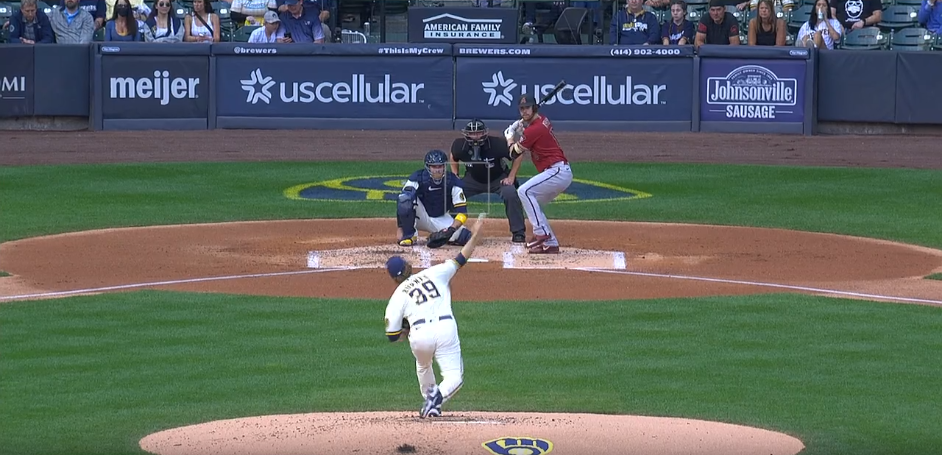
2023:
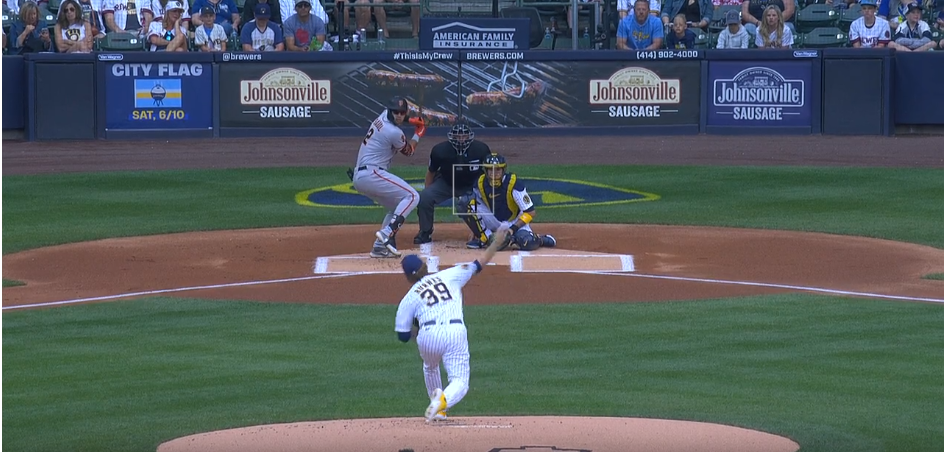
The change in release point is one new part of Burnes’ game in 2023, which is something that may take time for Burnes to feel completely comfortable with. An unexpected solution, but not an ability-altering one.
Disappearing Secondaries
Burnes’s secondaries have all regressed in 2023, but he is adapting to the changes and trying to figure out how to succeed with what he has. His main secondary, the curveball, is struggling to get the whiffs it once had. In 2021 and 2022, the curveball was a 20+% SwStr pitch, which was top ten in baseball.
It has lost four percent of whiffs this year, which is likely due to worse locations on the pitch. It still is a very tough pitch to hit, with a .138 AVG against and .118 xAVG, but Burnes needs an elite whiff rate on his curveball to be an ace.
The curveball isn’t enticing enough to get right-handed hitters to bite on it, as it is currently being thrown too low consistently. Burnes is able to get into two-strike counts, but struggling to get the hitters to chase from there. 20% of his curveballs have ended up in a waste location and in previous years he was not throwing the curveball this low. This could potentially be connected to the extra extension & lower release point as well.
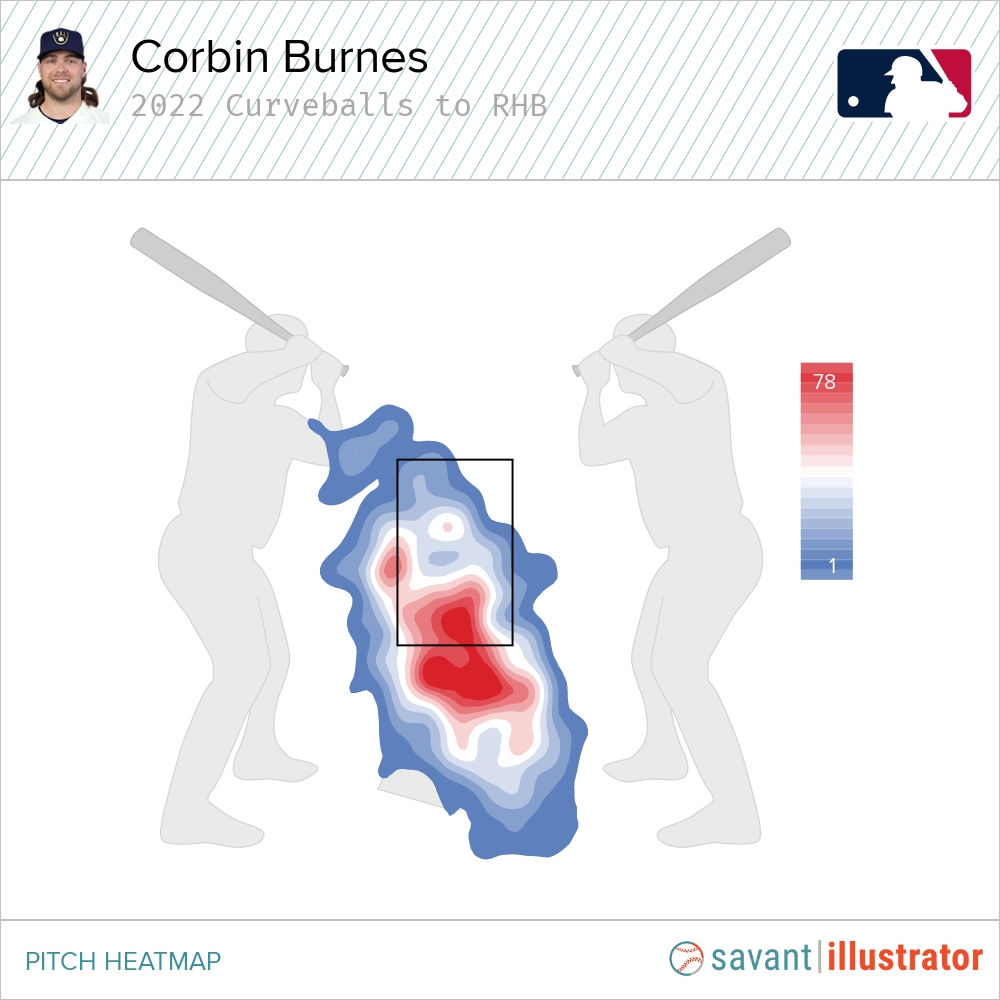
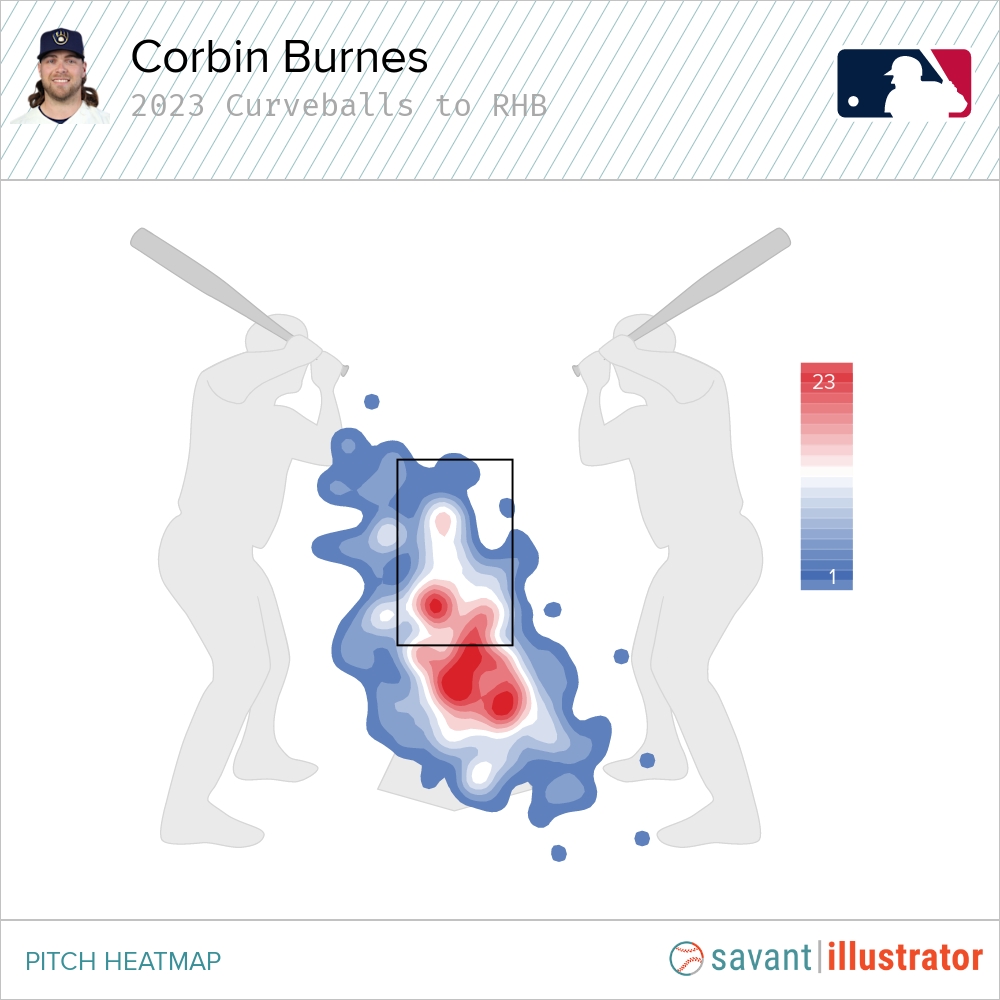
The curveball is dropping off just a bit further than 2022, but that’s having a massive effect on the whiffs. The chase rate has dropped 9% and the zone rate has dropped 6%, which are key in the curveball regressing.
Burnes needs to throw the curveball a tad more, as the pitch itself is still filthy. His 139 Stuff+ ranks third among qualified starters, and the pitch has improved by 13 from last year.
He’s still dominant against lefties with the curveball, which he is throwing in the zone slightly more. Lefties only have a .083 average against the pitch, but are also chasing less than usual. He throws the curveball 13% more often in 2 strike counts to righties than lefties, which makes it an imperative adjustment.
Beyond the curveball, we’re seeing Burnes already start to tinker with his arsenal. His slider is disappearing and for good reason: hitters are hitting over .200 on it for the first time in Burnes’ career. After throwing the slider 13% of the time in his 5/22 start against the Astros (where he gave up 5 ER in 5 IP), Burnes had nixed the slider to under 3% in his next two starts. The pitch has not been located as well as intended, in addition to a drop in stuff.
X-mLoc% is the percentage of pitches thrown in the middle third of the zone and gLoc% is the percentage of pitches thrown to the gloveside (away from RHB). Burnes isn’t getting the pitch as far away from the zone as he wants to, and hitters are making contact with the pitch 13% more frequently this year.
Additionally, the pitch has dropped from a 139 Stuff+ to 100 Stuff+, making it just an average slider. With the trends in usage, it’s clear that this pitch is on hiatus until Burnes figures it out. He’s still getting good whiff rates on the pitch, the location consistency simply needs improvement.
Finally, the changeup has been a quality offering for Burnes to attack lefties, but he is still trying to make up for lost whiffs. The pitch has dropped four percent in whiff rate from 2022, despite maintaining a 37% chase rate. He is challenging lefties more by throwing it in the zone 9 percent more frequently, which has led to both swing rates and contact rates increasing. However, lefties are hitting a paltry .108 on the changeup, making it the steadiest secondary pitch.
What’s Up With the Cutter?
Burnes’ primary pitch, his cutter, has been underwhelming as well. To start, it has dropped a tick in velocity, which is never a good sign for any pitcher. It’s especially important for someone like Burnes, who throws his cutter more than almost anyone in baseball. The cutter has decreased by 2.5% in CSW% to 31.2%, which puts the pitch in the 84th percentile.
While the movement profile hasn’t changed, the location is yet again the issue. Burnes has yet to live down and away with the pitch and as a result, is not getting these crucial swings and misses.
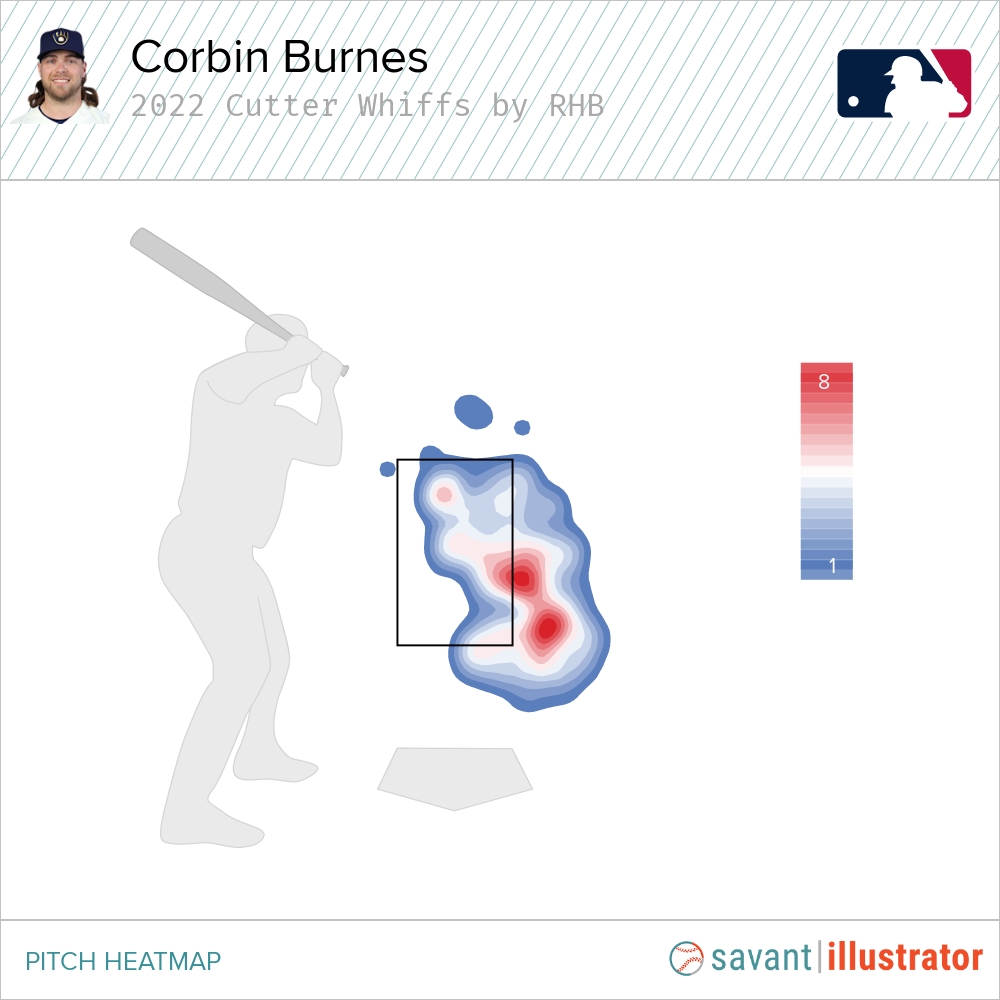
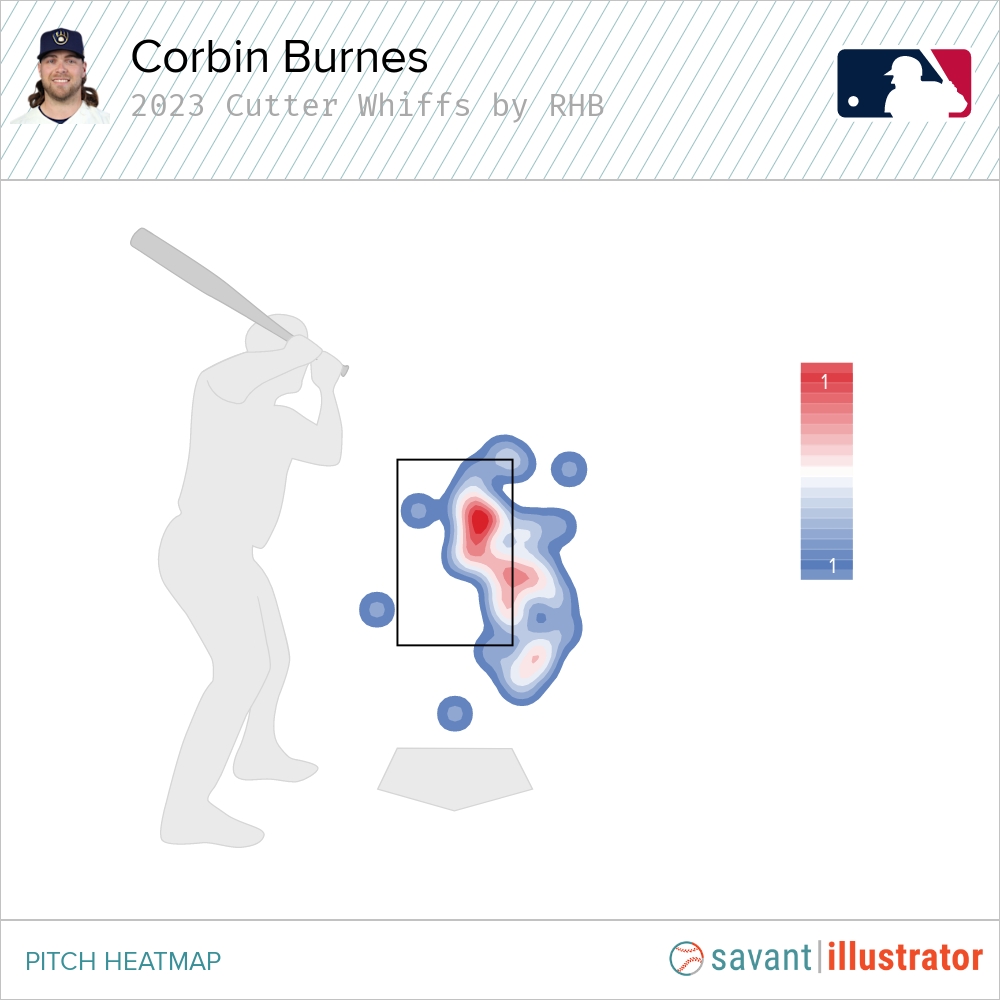
As the heatmaps show, Burnes is mostly getting whiffs within the zone, rather than the classic down-and-away cutter that we’re used to.
This new, higher cutter location has negatively impacted both plate discipline and batted ball metrics. The cutter’s chase rate is down 5.5%, which puts it just below the league average of 28.6%, while the contact rate has also climbed by 3%. The groundball rate has dipped to 36%, well below his career 52% groundball rate, and his flyball rate has jumped up 12% as well. Right-handed hitters now have a .235 AVG and a .318 wOBA, which are some of the highest of his career.
How Does Burnes Succeed from Here on Out?
Burnes’ fate lies in the location of his pitches to right-handed batters. His two main offerings, the cutter and curveball, need to adjust closer to where they’ve been before, because the cutter is too hittable and the curveball is too easy to lay off. These aren’t dramatic changes and can make a difference within one or two starts.
The slider, which Burnes has acknowledged is not at the level it needs to be via diminishing pitch usage, also needs to get more off the plate. He’s been throwing fewer strikes with all pitches except the slider, and it is hurting because of that increased strike rate.
Burnes is still exhibiting the ace-like tools, but he’s using them to be only a good pitcher, rather than a great one. Great pitchers find ways to adapt, and Burnes will break through this cold spell with just a touch of refinement.

Well this article aged well so far.